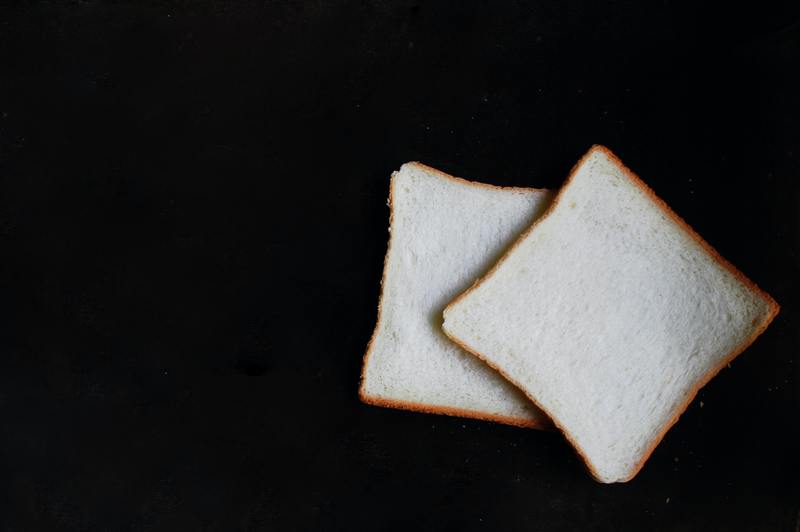People ask, “how long does it take for white bread to mold” since white bread is a common staple food. Mold can develop on white bread in as short as three days, so it would be best to keep them in proper storage.
Still, mold development depends on multiple factors. These factors include storage conditions, ingredients, and others.

Continue reading to learn everything there is to know about bread’s shelf life and how to extend it.
How Long Does It Take Before Bread Gets Moldy?
Bread in general molds within three to seven days. The length of a loaf’s shelf life depends on its ingredients, type, and storage method.
Out of all kinds of bread, organic white bread develops mold quickest. Mold grows quickly on organic white bread because it does not have preservatives compared to store-bought loaves.
As such, you can expect white bread to develop mold within three days at room temperature and exposed to moisture. In proper containers, white bread may last longer.
Why Does Mold Grow On Bread?
Mold is everywhere. Mold is a fungus that releases spores into the air, looking for a place to spread. Once it lands on damp organic material, mold begins feeding and spreading.
You can see mold grow when it eventually forms velvety patches. The colors of these patches can range from blue, green, and black.
The speed of mold growth depends on the bread’s acidity, moisture, and preservatives. The climate also plays a part in its development and spread.
Most kinds of bread are non-acidic and have a pH level of around seven. Compared to white bread, sourdough has a higher acidity level.
As such, sourdough bread develops mold much slower than white bread. Climate and moisture also play a massive part in how fast loaves of bread mold.
Mold thrives in damp and humid environments. With that said, leaving bread exposed to air and moisture will cause it to develop mold quicker.
Mold can spread through spores through the air even in the fridge. The fungus can spread to other food and onto equipment.
To help you clean it out, here is a helpful post about the five steps to clean mold out of your freezer.
Is It Bad To Eat Moldy Bread?
Mold is not always harmful. If you ate a small amount, mold most likely would not harm you at all.
However, mold can cause worse reactions in other people. The fungal spores can cause adverse respiratory reactions when inhaled.
You may experience coughing, sneezing, and nasal and eye irritation. The symptoms vary, but they are worse for people with asthma and immune diseases.
When ingested in large amounts, mold can make you sick, with the effects worsening depending on the type of mold you eat. Common types of mold can give you an upset stomach, while others can produce toxins.
Mold, such as the dreaded black mold, produce mycotoxins. These toxins primarily affect wheat and nut products.
When eaten or inhaled, mycotoxins may cause chronic fatigue, rashes, depression and cancer.
Mold can cause severe diseases when left alone. If you want to know more, check out this helpful article about the most dangerous kind of mold.
When you see mold on your bread slice, it would be best to throw the whole loaf away. Mold becomes visible only in large amounts.
Most of the time, they can spread their roots deeply without becoming detected.
How To Keep Bread From Molding
Keeping your bread from developing mold is simple. To prevent mold from growing, you have to store your food away from what fungi want.
If you have organic white bread, place it in a sealable bag and store it in a dry place. By keeping moisture away from your loaf, you can significantly extend its shelf life.
For store-bought bread, you can simply tie the bag using the lock that came with it. You can also use bread boxes, brown paper bags, or cloth bags.
These containers will allow just enough air circulation to keep your bread fresh while protecting it from spores and moisture.
You can also try freezing your bread. To thaw your loaf, just remove the amount you want to use and cover them with a napkin.
Place the thawing bread on the counter until it returns to room temperature.
Bread thaws quickly, so it would be best to watch over it. If you keep it out for too long, the bread can grow stale quickly due to the moisture from freezing.
You can also consider getting a toaster with a defrost setting to thaw your bread quicker. Your toaster can then warm or toast it afterward.
Conclusion
Knowing how long does it take for white bread to mold can help you determine its shelf life. In general, it would be best to consume your white bread within three to seven days.
However, you can significantly increase your loaf’s shelf life if you store it properly.
It is also best to remember not to eat moldy bread. Ingesting moldy bread can cause adverse health effects, especially for those with respiratory ailments and compromised immune systems.
